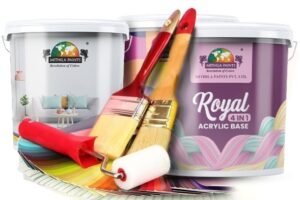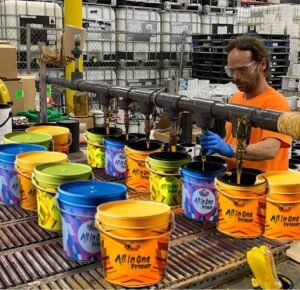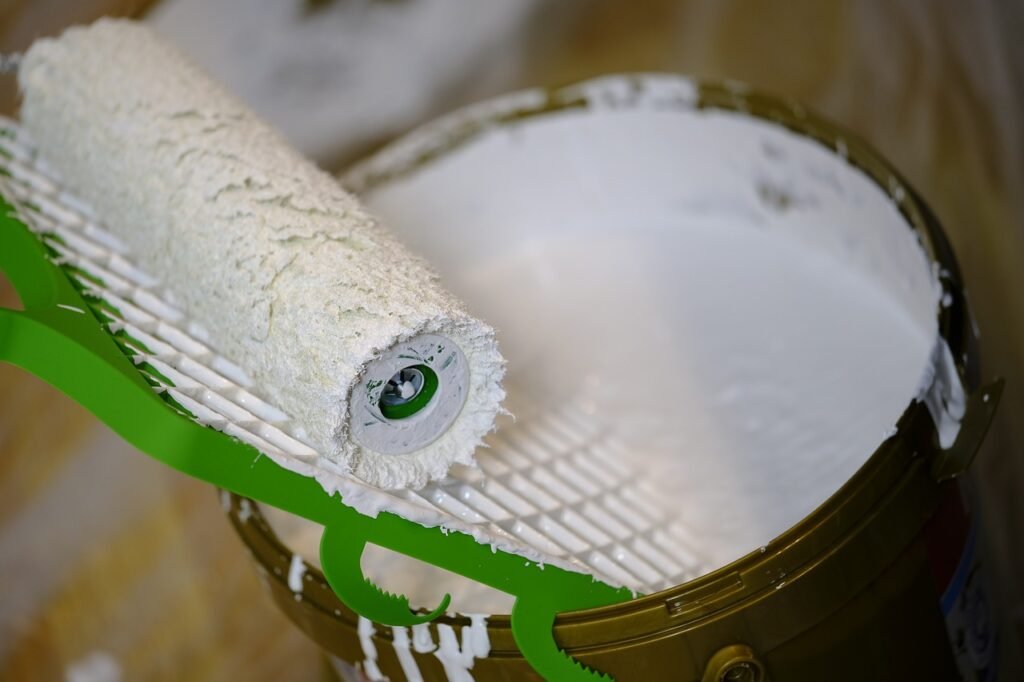Introduction to Rheology Modifiers
The historical significance of Mithila Paints is profound. Traditionally, they were depictions of religious themes, daily life, nature, and folklore. The use of vibrant colors and unique patterns made this art distinctive and deeply symbolic. Natural dyes derived from plants, leaves, and other organic sources were the primary painting materials, representing an eco-friendly and sustainable approach long before modern environmental concerns were prevalent.
Over time, Mithila Paints have evolved while maintaining their cultural essence. They have transitioned from wall paintings to canvas, paper, and other forms, making them more accessible and widely recognized in the global art community. This evolution has also led to Mithila Paints finding novel applications beyond their aesthetic value.
One such emerging application is in the field of rheology modification. Rheology modifiers are substances used to alter the flow properties of materials. The unique compositions and natural ingredients of Mithila Paints provide them with properties conducive to this role. These paints are now being explored for their potential in modifying viscosity, improving texture, and stabilizing formulations in various industrial and commercial products.
Thus, Mithila Paints have not only preserved their rich artistic heritage but have also adapted to contemporary technological needs, demonstrating their versatility and enduring relevance. As we delve deeper into their rheological applications, it is essential to appreciate their historical and cultural roots, which continue to influence their modern-day utility.
Rheology is the study of the flow and deformation of matter, particularly focusing on the behavior of complex fluids under various conditions. It encompasses an analysis of how substances respond to applied forces, revealing crucial insights into their viscosity, elasticity, and plasticity. In practical terms, rheology examines why substances behave in a certain way under stress, such as how they pour, spread, or mix.
Rheology modifiers are specialized additives used to control and optimize the rheological properties of materials. These modifiers are essential across numerous industries, including coatings, adhesives, cosmetics, pharmaceuticals, and food production. By incorporating rheology modifiers, manufacturers can alter a substance’s viscosity, which in turn influences its flow behavior, stability, and texture.
In fluids, properties such as thickness, fluidity, and resistance to deformation are critical for practical applications. For instance, in the paint industry, achieving the right consistency ensures that the paint spreads evenly without dripping. Rheology modifiers enable fine-tuning of these attributes, thus ensuring the product meets specific performance criteria. Enhancing the physical properties of these fluids makes them more suitable for their intended applications, providing desired textures and consistency, improving shelf-life, or stabilizing emulsions.
The proper use of rheology modifiers can significantly enhance processability and application properties. For example, in pharmaceuticals, these modifiers can ensure that syrups and gels maintain a uniform consistency, which is vital for accurate dosing. In the food industry, they help achieve the correct texture and stability for products like sauces and dressings, enhancing consumer experience and satisfaction.
Therefore, rheology modifiers play a pivotal role in ensuring that products perform as expected under specific conditions. Their ability to adjust flow behavior, viscosity, and texture opens up diverse possibilities for innovation and improvement in product formulations, serving as an indispensable tool in various sectors.
Composition of Mithila Paints
Traditionally, pigments in Mithila Paints are derived from plant extracts, minerals, and other organic sources. For example, black is obtained by mixing soot with cow dung, yellow from turmeric or pollen, blue from indigo, and red from the juice of Kusum flowers or red sandalwood. The binders, which play a critical role in the paint’s adhesion and consistency, are often derived from tree resins, honey, and animal gelatin, imparting a distinctive tactile quality to the artwork.
In contrast, modern Mithila Paints, particularly those adapted for industrial applications, may incorporate synthetic components to enhance performance and ease of use. Contemporary formulas often use synthetic pigments and binders, which offer a broader color palette and improved consistency. These synthetic ingredients include acrylics, polyvinyl acetates (PVA), and other commercial binders that offer greater durability and versatility compared to their traditional counterparts.
The shift towards synthetic components in modern Mithila Paints is driven by the need for higher stability, faster drying times, and uniform application, especially in industrial contexts. While traditional Mithila Paints are valued for their natural aesthetic and historical significance, contemporary variants are optimized for wider usage, scalability, and enhanced functionality as rheology modifiers in various industrial applications.
Despite these differences, both traditional and modern Mithila Paints leverage the fundamental understanding of pigments and binders to achieve their intended artistic and functional properties. The evolution from natural to synthetic compositions reflects a balance between preserving cultural heritage and meeting modern technological demands.

How Mithila Paints Function as Rheology Modifiers
Mithila Paints, rooted in the rich cultural heritage of the Mithila region, have garnered attention for their functional properties, particularly as rheology modifiers. Rheology, a branch of physics that deals with the flow and deformation of materials, is profoundly influenced by certain additives known as rheology modifiers. Mithila Paints function brilliantly in this capacity through distinct mechanisms that alter the rheological properties such as viscosity, thixotropy, and elasticity of various substrates.
At the fundamental level, the effectiveness of Mithila Paints as rheology modifiers can be attributed to their unique molecular composition and particle size distribution. These paints contain naturally occurring polymers and colloidal particles that interact with the fluid medium to increase or decrease its resistance to flow. When integrated into a formulation, such as a coating or a resin, they can enhance its viscosity, enabling better control over the application process and improving the end-user experience.
One of the key scientific principles at play is the modification of the fluid’s thixotropic properties. Thixotropy refers to a time-dependent decrease in viscosity, a characteristic that is particularly beneficial in applications requiring ease of application and stability over time. Mithila Paints achieve this by forming a network structure within the fluid matrix that temporarily breaks down under shear stress, such as brushing or spraying, and reestablishes when the stress is removed. This ensures that the paint remains stable without settling or sagging, while still flowing freely when applied.
Moreover, the viscoelastic behavior of Mithila Paints contributes to their efficacy as rheology modifiers. By balancing viscous and elastic responses, these paints can manage the deformation under stress and recover when the stress is released, which is crucial for maintaining the integrity of coatings under mechanical action. The synergy between these properties facilitates enhanced performance in various industrial and artistic applications.
Scientific research into the composition and behavior of Mithila Paints continues to uncover deeper insights into their functionality, promising advancements in their applications as rheology modifiers. This highlights the intersection of traditional art and modern science, ushering new possibilities in material science and industry.

Applications in Industry
Mithila Paints serve as innovative rheology modifiers across diverse industries, bringing unique benefits that enhance product performance and manufacturing processes. In the cosmetics industry, these paints are utilized to improve the texture and consistency of products like creams, lotions, and gels. Due to their ability to control flow properties, Mithila Paints ensure that cosmetic formulations maintain a stable and desirable feel, contributing to a better user experience. For example, they help prevent the separation of components in emulsions, thereby maintaining the product’s efficacy and shelf life.
In the pharmaceutical sector, Mithila Paints play a crucial role in the formulation of various medicinal products. Their rheological properties are essential in controlling the viscosity and flow behavior of liquid medications, ointments, and other dosage forms. This ensures uniform distribution of active ingredients, enhances the stability of suspensions, and guarantees the precision of dosage delivery. Additionally, their biocompatibility and non-toxicity are significant advantages that support their application in pharmaceuticals, where patient safety is paramount.
The construction industry benefits substantially from the use of Mithila Paints as rheology modifiers in materials like cement, plaster, and adhesives. These paints enhance the workability and application of construction materials by stabilizing mixes and improving spreadability. For instance, the addition of Mithila Paints to cement reduces the occurrence of cracks and shrinkage, leading to more durable structures. Similarly, in plaster and adhesives, they prevent sagging and improve bond strength, facilitating easier application and better performance.
In the food industry, Mithila Paints are incorporated into products to modify their viscosity and texture. These properties are crucial in the production of sauces, dressings, dairy products, and beverages. By adjusting the rheology, Mithila Paints ensure consistent quality and mouthfeel, which are important for consumer satisfaction. For example, they help in creating smooth and homogeneous sauces that do not separate or become too thick over time.
Overall, the versatility of Mithila Paints as rheology modifiers demonstrates their broad utility across these industries. Their ability to control flow properties and improve product performance makes them a valuable component in numerous applications, driving advancements and efficiencies in various fields.

Advantages of Using Mithila Paints
Mithila Paints offer a range of advantages that set them apart from traditional rheology modifiers. One of the primary benefits is sustainability. Unlike many synthetic rheology modifiers, Mithila Paints are made using natural ingredients, reducing the overall environmental impact. Their production process is designed to minimize waste and pollution, contributing to a more sustainable ecosystem.
Environmental impact is another critical factor where Mithila Paints excel. These paints are free from harmful chemicals, making them safer for both the environment and human health. Users can apply Mithila Paints without the concern of contributing to air or water pollution, which is a significant advantage over conventional rheology modifiers laden with volatile organic compounds (VOCs).
Cost-effectiveness is a noteworthy aspect of Mithila Paints. While the initial cost might be slightly higher than standard options, their superior coverage and longevity mean less frequent reapplication. Thus, in the long-term, they prove to be more economical. Furthermore, the reduced need for protective equipment or specialized disposal methods cuts down on additional expenses, making Mithila Paints a prudent financial choice.
The performance of Mithila Paints is also commendable. They offer excellent viscosity control and stability, ensuring consistent results across a variety of applications. Their natural composition allows for better adaptability to different surfaces, enhancing adhesion and overall finish quality. User testimonials often highlight the paints’ easy application and ability to maintain texture and appearance over extended periods.
One instance demonstrating the efficacy of Mithila Paints involved a major renovation project at a heritage site. The project manager chose Mithila Paints for their sustainable properties and lasting finish. The result was not only an aesthetically pleasing restoration but also a significant reduction in the environmental footprint of the project.
Moreover, feedback from homeowners and commercial users alike points to the superior tactile feel and aesthetic appeal of these paints. “Switching to Mithila Paints was the best decision for our eco-friendly renovation,” notes a satisfied user, emphasizing the end product’s visual and environmental virtues.

Challenges and Limitations
Mithila Paints, esteemed for their vivid colors and cultural significance, have garnered interest as innovative rheology modifiers. However, despite their potential, there exist notable challenges and limitations that restrict their broader application. One primary concern is their stability issues. Naturally derived pigments in Mithila Paints may exhibit inconsistent performance when used as rheology modifiers. Variations in raw material quality and properties can affect the consistency in modifying the flow behavior of substances, making it difficult to achieve uniform results.
Another critical challenge is compatibility with certain substances. Mithila Paints, particularly those prepared using traditional methods, might not be chemically compatible with modern formulations. This incompatibility can lead to unpredictable reactions or the breakdown of the paint structure when mixed with synthetic compounds or high-performance polymers commonly used in industrial applications. Such reactions can limit the use of Mithila Paints to specific, less demanding environments where traditional and natural materials are preferred.
Moreover, limitations in specific applications present significant drawbacks. While Mithila Paints have potential in art and decorative sectors, their utility as rheology modifiers in high-tech or precision-demanding fields is questionable. For instance, in pharmaceuticals or cosmetics, where exact control over viscosity and stability under various conditions is crucial, Mithila Paints might fall short. The organic nature of these paints could lead to biodegradation or contamination risks, which is unacceptable in stringent industries requiring long-term stability and sterility.
Finally, scalability is a concern. The artisanal production methods of Mithila Paints, which uphold their traditional charm, may not align with the mass production needs of industrial rheology modifiers. Ensuring consistent quality and availability at an industrial scale without compromising the authenticity and properties of the paint is a substantial hurdle.
In light of these challenges, there remains a need for further research to mitigate stability issues and enhance compatibility, ensuring that Mithila Paints can fulfill their potential as innovative rheology modifiers whilst maintaining their unique, culturally rich identity.

Future Prospects and Innovations
The future of Mithila Paints as rheology modifiers is filled with promising potential, driven by ongoing research and technological advancements. As industries increasingly seek sustainable and efficient solutions, Mithila Paints stand at the forefront of innovation thanks to their unique characteristics and cultural significance.
One significant area of future research is the enhancement of the chemical composition of Mithila Paints to improve their performance as rheology modifiers. Scientists are exploring the integration of modern chemical techniques with traditional formulations, which could lead to the development of more robust and versatile paints. This fusion of traditional methods with contemporary science holds great promise for creating rheology modifiers that can be tailored for specific industrial applications such as in pharmaceuticals, cosmetics, and food processing.
Upcoming trends also indicate a shift towards utilizing natural and eco-friendly components in creating these modifiers. Mithila Paints, known for their natural origins, align well with this green chemistry trend. Future innovations may involve optimizing the extraction and processing methods of raw materials to enhance the paint’s sustainability and efficacy. This could reduce the environmental impact and offer industries a more sustainable option.
Technological advancements in nano-materials and bioengineering are also poised to revolutionize the application of Mithila Paints. Researchers are investigating nano-scale modifications to enhance the paint’s properties such as viscosity, flow behavior, and stability. Such advancements can significantly expand their applicability, offering more refined control over rheological properties in diverse industrial processes.
Collaborations between academic institutions, research organizations, and industry leaders are crucial to driving these innovations. Numerous studies are currently underway, focusing on leveraging multidisciplinary approaches to maximize the efficacy and versatility of Mithila Paints as rheology modifiers. These ongoing efforts underscore the collaborative spirit in the scientific community, aimed at unlocking new potentials and applications for these traditional yet innovative materials.
In light of these future prospects, Mithila Paints are poised to become an integral part of the next generation of rheology modifiers, providing industries with novel solutions that are both effective and environmentally sustainable.


